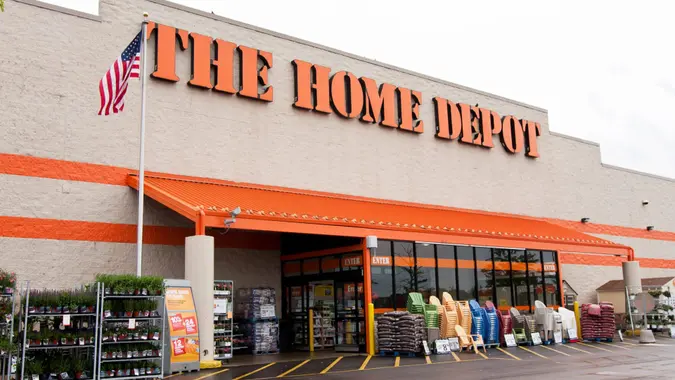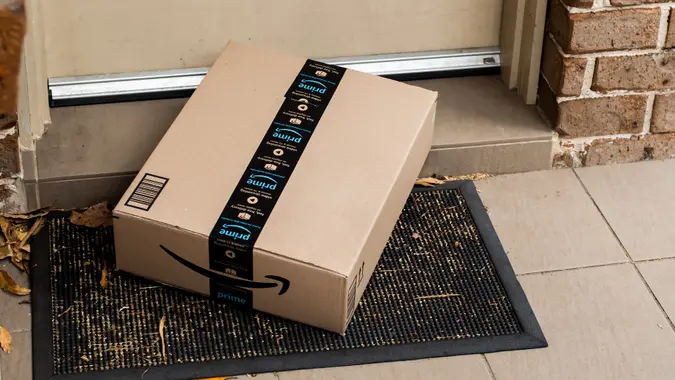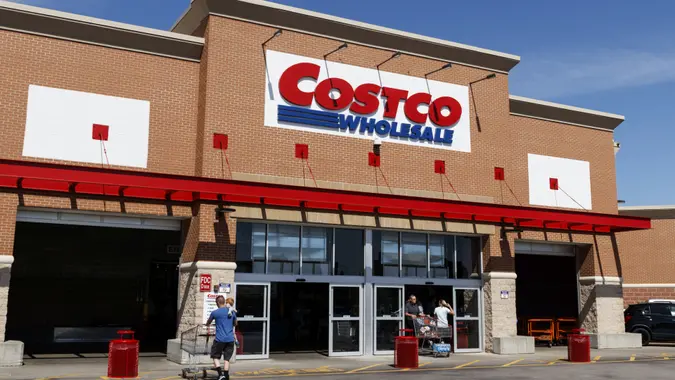Advertiser Disclosure
GOBankingRates works with many financial advertisers to showcase their products and services to our audiences. These brands compensate us to advertise their products in ads across our site. This compensation may impact how and where products appear on this site. We are not a comparison-tool and these offers do not represent all available deposit, investment, loan or credit products.
6 Grocery Items You Should Never Pay More Than $4 for, According to Shopping Experts
 Written by
Angela Mae
Written by
Angela Mae
 Edited by
Molly Sullivan
Edited by
Molly Sullivan

Commitment to Our Readers
GOBankingRates' editorial team is committed to bringing you unbiased reviews and information. We use data-driven methodologies to evaluate financial products and services - our reviews and ratings are not influenced by advertisers. You can read more about our editorial guidelines and our products and services review methodology.

20 YearsHelping You Live Richer

Reviewed by Experts

Trusted by Millions of Readers
According to the latest Bureau of Labor Statistics data, the average American household spends $5,703 a year on groceries — or $475 a month. This amount can be much higher for larger households or those living in more expensive areas with higher all-around prices.
But while some groceries are expensive by default, some items should be bought at as low of a price as possible.
“As grocery prices remain high, we know that consumers are continually looking for ways to stretch their budget,” said Saran Jankowski, director of user growth and integrated marketing at Shopkick. “One way to do that is to identify those items on your list that should never exceed a certain dollar amount — in this case, items that should always be less than $4.”
Peanut Butter
A jar of Jif peanut butter can cost upwards of $6 at stores like Publix, while organic options can be even more. But that doesn’t mean you should be spending that much.
“I’m always looking for healthy foods so [one of] my favorites is peanut butter, which is a great source of protein and can be found for around $2-$4,” Jankowski said.
If you’re seeing higher price points for peanut butter, consider alternative brands or less expensive stores. Many times, even the generic brands use the same ingredients and taste similar to the higher-end options.
Gift Supplies
If you’re celebrating a holiday or birthday, you may be tempted to spend more than you need to. For some, this could be due to the excitement of the upcoming celebration. For others, it could be a desire to get your shopping done more quickly so you can get to the main event.
Oftentimes, people end up spending much more than $4 on individual gifts and party supplies because of the store they’re shopping at. This isn’t surprising considering many retailers mark up their prices for these things, especially around specific national holidays.
But shopping experts suggest keeping costs low here — and perhaps saving your money for the main event or other things.
“Gift and party supplies, like gift bags and wrapping paper, greeting cards, party decorations, and cake decorations…You can pay quite a bit for these kinds of items at grocery stores and other retailers, but dollar stores like Family Dollar often have gift and party supplies of comparable quality for $1 or $2,” said Todd Stearn, founder and CEO of The Money Manual.
Fruits and Vegetables
Fresh produce is nice to have since it’s part of what makes up a balanced, healthy diet. But you might be spending too much here, especially if you’re shopping organic or only go to higher-end stores like Whole Foods or Publix.
“You don’t need to omit fresh produce when your budget is tight,” Jankowski said. “Just look for what’s in season! Seasonal fruits and veggies such as apples, bananas, carrots, and potatoes are often under $5 per pound.”
As an added bonus, shopping for what’s in season means you always get a little bit more variety in what’s in your refrigerator or on your counter. It’s a great way to diversify your options, but you can also just stick with options like red delicious apples, carrots and bananas to keep costs low.
Spices
Whether you’re looking for something simple — like salt, pepper or onion powder — or something a bit more unique — like cardamom or cumin — you shouldn’t spend more than $4 on any one spice. In some cases, you should be spending no more than half that. The same goes for basic seasoning mixes.
“You can pay several dollars for these items in grocery stores, but they’re often just $1 in stores like Dollar General,” Stearn said.
Dollar stores generally carry smaller containers, but if you don’t plan to use a particular herb or spice a lot, that might still be plenty. Plus, you’re not likely to notice any flavor differences as you add them to your meals.
And if you’re making a dish that calls for a specialty spice, see if you can use an alternative as a substitute. That way, you won’t end up spending money on something you only end up using once.
Cleaning Supplies
When it comes to cleaning supplies, you’ll want to get something that does the job, but you can still keep costs to less than $4 here — depending on the specific product, how much of it you need and where you shop.
Certain supplies, like reusable cloths, should be even cheaper.
“While you may prefer specific brands of cleaning solutions only available at certain retailers or online, cleaning products like 6-packs of nylon scrub pads and microfiber dusting cloths tend to be quite a bit cheaper at dollar stores,” Stearn said. “You should only pay a couple of dollars at most for these.”
Do some comparison shopping for the different cleaning supplies you use and see where they might be cheaper. You might find the same multipurpose cleaner at a store like Walmart for a couple of dollars off the price at, say, Wegmans or even Target.
Pantry Staples
Having a fully stocked pantry is the best, but it can also be expensive if every item costs $4 or more. Considering most pantry staples last a long time and typically taste similar regardless of brand, you might as well keep to a stricter budget here.
“In my opinion, you should never pay more than $4-$5 for some food products, such as fundamental pantry staples like rice, pasta, canned veggies and beans,” said Elisa Bender, e-commerce enthusiast at Revenue Geeks.
Store-brand or generic brands are generally cheaper than name-brand options, but they serve the same purpose. So, unless you’re committed to a specific brand, try a less expensive alternative.
Share This Article:




You May Also Like

6 Best Sam's Club Deals Under $70 To Help You Keep Your New Year's Resolutions
December 12, 2025
6 min Read

I Asked Gemini What To Avoid Buying Until the Holidays End -- Here's What It Said
December 17, 2025
6 min Read


See the Average Gift Spending Amounts for Holidays, Weddings, Birthdays and More
December 12, 2025
6 min Read





I Asked ChatGPT What To Get My Boomer Mom for Christmas -- Here's What It Said
December 15, 2025
6 min Read



I Tracked Costco Prices Before and After Trump's Tariffs -- The Changes Surprised Me
December 12, 2025
6 min Read

Make your money work for you
Get the latest news on investing, money, and more with our free newsletter.
By subscribing, you agree to our Terms of Use and Privacy Policy. Unsubscribe at any time.


Thanks!
You're now subscribed to our newsletter.
Check your inbox for more details.



Sending you timely financial stories that you can bank on.
Sign up for our daily newsletter for the latest financial news and trending topics.
For our full Privacy Policy, click here.
Looks like you're using an adblocker
Please disable your adblocker to enjoy the optimal web experience and access the quality content you appreciate from GOBankingRates.
- AdBlock / uBlock / Brave
- Click the ad blocker extension icon to the right of the address bar
- Disable on this site
- Refresh the page
- Firefox / Edge / DuckDuckGo
- Click on the icon to the left of the address bar
- Disable Tracking Protection
- Refresh the page
- Ghostery
- Click the blue ghost icon to the right of the address bar
- Disable Ad-Blocking, Anti-Tracking, and Never-Consent
- Refresh the page





